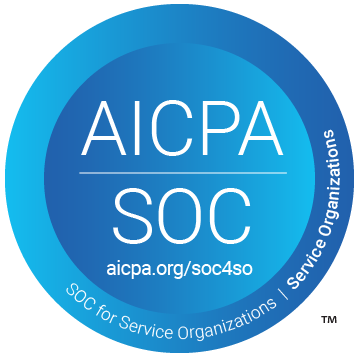Monitoring
Compliance
We understand the unique regulatory landscape of the education industry. Our platform is built and maintained with a focus on adhering to key security, privacy, and accessibility standards to give you peace of mind.

SOC 2 Type 1
Resources
Explore our latest security and compliance resources and reports.
Privacy Policy
A detailed explanation of how we collect, use, and protect personal data, in compliance with regulations.
Terms & Conditions
The legal agreement that governs the use of our products and services.
Accessibility Charter
Our commitment to making our products and services accessible to all users, including those who rely on assistive technologies, in compliance with standards like WCAG.
Higher Education Community Vendor Assessment Toolkit (HECVAT V3.06)
The Higher Education Community Vendor Assessment Toolkit is used by colleges and universities to assess our security and privacy practices.
SOC 2 Type 1 Report
Service Organization Controls (SOC 2) (Type I) trust services principles.
SOC2 Engagement Letter
This letter confirms our engagement with an independent auditor to conduct a SOC 2 Type 1 and 2 audit, demonstrating our commitment to regular and transparent security assessments.
K-12CVAT: K-12 Community Vendor Assessment Tool Lite-V4.1
The K-12 Community Vendor Assessment Toolkit provides a standardized method for K-12 institutions to evaluate our security and privacy posture.
CTE - Higher Education Community Vendor Assessment Toolkit (HECVAT V3.06)
A version of the Higher Education Community Vendor Assessment Toolkit tailored specifically for evaluating the security and privacy controls of our CTE platform.
Responsible Adoption of AI Policy
As a leader in Ed Tech, Stukent is committed to the responsible use of Artificial Intelligence. This policy outlines our perspective, evolving guidelines, and ethical framework for integrating AI to enhance teaching and learning while mitigating risk.
FAQs
Answering Your Top Security and Compliance Questions.
Subprocessors
Our commitment to security extends to the partners we choose to work with. We carefully vet and manage all of our sub-processors to ensure they meet our rigorous security and compliance standards. Below is a list of our sub-processors and a brief description of the services they provide.
AWS
A cloud computing platform that provides a wide range of services, including compute power, storage options, and databases, forming the core infrastructure for our applications.
Attention
Attention records your sales touchpoints across meetings, emails, calls, CRMs and more. Our AI agents learn from that data and automate busywork: follow-ups, next steps, CRM updates, coaching scorecards and more. Stop losing winnable deals to process and start automating.
Azure
A cloud computing service that we use to host and manage some of our applications and data, ensuring high availability and scalability.
Azure Active Directory
A cloud-based identity and access management service that helps us securely manage user access to our applications and resources.
Azure DevOps
A suite of developer services that allows our engineering teams to plan, collaborate, and deploy software, enhancing our development and operational workflows.
Cloudflare
A content delivery network (CDN) and security service that protects our applications from threats, optimizes performance, and ensures high availability.
Datadog
A monitoring and analytics platform that provides us with real-time insights into the performance and health of our infrastructure and applications.
DigitalOcean
A cloud infrastructure provider that offers virtual servers, databases, and other services. We use it to host and scale specific parts of our application environment.
FormAssembly
A web form building platform used for data collection and integration with our other systems, ensuring secure and efficient management of form-based data.
